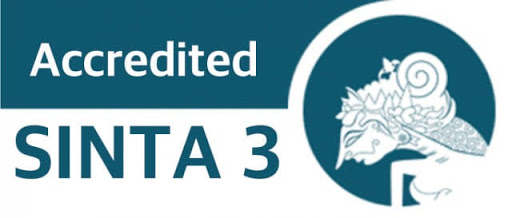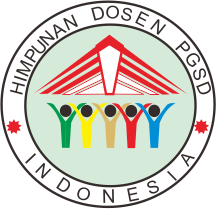COMPARATIVE STUDY OF DISCUSSION AND QUESTION-ANSWER LEARNING METHOD TO IMPROVE LEARNING OUTCOMES OF VOCATIONAL HIGH SCHOOL STUDENTS
Abstract
This study aims to determine whether there are differences in learning outcomes using discussion learning methods and using the Q&A learning method at Yaperjasa Vocational High School. The type of the research was Classroom Action Research with quantitative approach using the comparative method. The number of samples was 80 students which divided into 2 classes, namely class XI Office Administration 1 (control class) using the discussion method and class XI AP 2 (experimental class) using the question and answer method. The results of the study showed that there were 3 cycles, namely the first cycle t-value> t-table or 3.323> 1.685, in cycle II t-value<t-table and -0.087 <1.685, and in cycle III t-value> t-table or 3.209> 1.685. Cycles I and III showed that t-value was greater than t-table. It meant that the values obtained by students in the control class with the experimental class there were significant differences in learning outcomes. Students’ learning outcomes by applying discussion learning methods compared to using question and answer learning methods.
Keywords
Full Text:
PDF (Bahasa Indonesia)References
Ananda, R., Rafida, T., & Syahrum. (2014). Penelitian Tindakan Kelas. https://doi.org/10.21831/jpai.v6i1.1793
Fitria, D., Abdillah, A., Prasetyono, H., & Cahyo, I. D. (2019). The Difference of Enterprises Taxpayers Compliance after Tax Amnesty. Journal of Economics and Policy, 12(1), 86–99. https://doi.org/https://doi.org/10.15294/jejak.v12i1.18826
Gerritsen-van Leeuwenkamp, K. J., Joosten-ten Brinke, D., & Kester, L. (2019). Students’ perceptions of assessment quality related to their learning approaches and learning outcomes. Studies in Educational Evaluation, 63, 72–82. https://doi.org/10.1016/j.stueduc.2019.07.005
Iim, I., & Khoiri, N. (2013). Studi Komparasi Model Pembelajaran Two Stay Two Stray Dengan Metode Diskusi Dan Model Direct Intruction Dengan Metode Resitasi Berbantuan Buku Saku Terhadap Aktivitas Dan Hasil Belajar Kognitif Siswa. Jurnal Penelitian Pembelajaran Fisika, 4(9), 1–5. https://doi.org/10.1017/CBO9781107415324.004
İli̇c, U., & Akbulut, Y. (2019). Effect of disfluency on learning outcomes, metacognitive judgments and cognitive load in computer assisted learning environments. Computers in Human Behavior, 99, 310–321. https://doi.org/10.1016/j.chb.2019.06.001
Indriaturrahmi, & Sudiyatno. (2016). Peran Dunia Usaha Dan Dunia Industri Dalam Penyelenggaraan SMK Berbasis Kearifan Lokal Di Kota Mataram. Jurnal Pendidikan Vokasi, 6(2), 162–172.
Jasmini. (2019). Pembelajaran Metode Demontrasi Dan Alat Peraga Terhadap Hasil Belajar PKn Siswa Kelas III SDN 004 Teratak Buluh Kecamatan Siak Hulu. Jurnal PAJAR (Pendidikan Dan Pengajaran), 3(4), 711–722.
Kamdi, W. (2017). Revitalisasi SMK: Mendongkrak Unggulan Nasional. Direktorat Pembinaan SMK Direktorat Jenderal Pendidikan Dasar Dan Menengah Kementerian Pendidikan Dan Kebudayaan, p. 1. Retrieved from http://psmk.kemdikbud.go.id/konten/2637/revitalisasi-smk-mendongkrak-unggulan-nasional
Loyko, O., Dryga, S., Park, J., & Palianov, M. (2015). Modern Professional Education in the Global Society: Comparative Study. Procedia - Social and Behavioral Sciences, 206, 464–468. https://doi.org/10.1016/j.sbspro.2015.10.084
Lutvaidah, U. (2016). Keefektifan Strategi Pembelajaran antara Metode Tutor Sebaya dengan Metode Tanya Jawab dalam Pengajaran Remidial Materi Fungsi Limit. Formatif: Jurnal Ilmiah Pendidikan MIPA, 6(3), 266–275. https://doi.org/10.30998/formatif.v6i3.998
Nurfarhana, A., Abdillah, A., & Prasetyono, H. (2017). Faktor Yang Berpengaruh Terhadap Disiplin Kerja Guru SMKN 1 Depok Dan SMKS Yapan Indonesia. Jurnal Research and Development Journal Of Education, 44(22), 3–22.
Prananingrum, R. (2017). Persepsi Mahasiswa Tentang Penerapan Metode Cooperative Learning dan Ceramah Tanya Jawab dalam Peningkatan Minat Belajar Askeb Hamil. Jurnal Ilmiah Kesehatan, X(2), 238–241.
Prasetyono, H., Abdillah, A., Widiarto, T., & Sriyono, H. (2018). Character-based Economic Learning Implementation and Teacher’s Reinforcement on Student’s Affective Competence in Minimizing Hoax. Cakrawala Pendidikan, 37(3), 426–435.
Prasetyono, Hendro, Abdillah, A., & Fitria, D. (2018). Academic Supervision toward Teacher ’ s Performance through Motivation as Intervening Variable. Journal of Education and Learning (EduLearn), 12(2), 188–197. https://doi.org/10.11591/edulearn.v12i2.7324
Raden, R. A., & Abdul, F. S. N. U. (2014). Penerapan Metode Ceramah dan Diskusi Dalam Meningkatkan Hasil Belajar PAI di SMA Negeri 44 Jakarta. Studi Al-Qur’an; Membangun Tradisi Berfikir Qur’an, 10(2), 119–131.
Saputra, S., & Prasetyono, H. (2020). The Effect of Scientific Approach to the Activity of Learning Students in SMPN 25 Tangerang City. Jurnal PAJAR (Pendidikan Dan Pengajaran), 4(1), 20–30.
Subadi, T. (2010). Lesson Studi Berbasis PTK (Penelitian Tindakan Kelas). Surakarta: Badan Penerbit FKIP UMS.
Yibeltal, J., & Tessega, M. (2020). Social Sciences & Humanities Open The implementation of early childhood care and education ( ECCE ) in Bahir Dar city administration : A comparative study between private and public pre-primary schools. Social Sciences & Humanities Open, 2(1), 100013. https://doi.org/10.1016/j.ssaho.2020.100013
DOI: http://dx.doi.org/10.33578/pjr.v4i3.7990
Refbacks
- There are currently no refbacks.
Copyright (c) 2020 JURNAL PAJAR (Pendidikan dan Pengajaran)

This work is licensed under a Creative Commons Attribution-NonCommercial-ShareAlike 4.0 International License.
JURNAL PAJAR (Pendidikan dan Pengajaran)
Secretariat
Program Studi Pendidikan Guru Sekolah Dasar
Gedung B1, FKIP Universitas Riau
Kampus Bina Widya Km. 12,5 Simpang Baru Panam
Pekanbaru Riau Indonesia 28293
e-mail : pajar@ejournal.unri.ac.id




